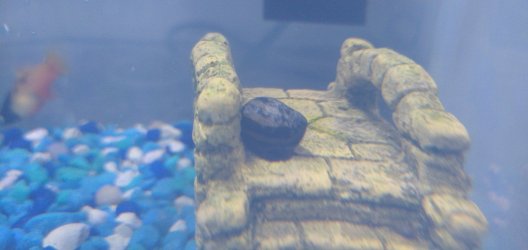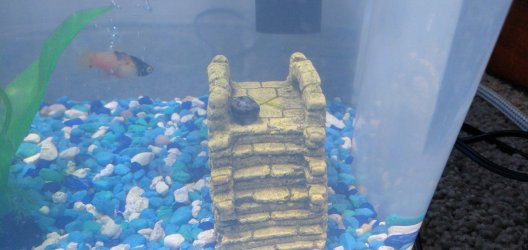🌟 Exclusive Amazon Black Friday Deals 2024 🌟
Don’t miss out on the best deals of the season! Shop now 🎁
You are using an out of date browser. It may not display this or other websites correctly.
You should upgrade or use an alternative browser.
You should upgrade or use an alternative browser.
Something is wrong with my Nerite's shell
- Thread starter JemZ
- Start date
yes, get a cuttlebone and wash it and put it in, get crushed coral, marble chips/limestone chips, not sure about this but egg shell
any of these work, personally i'd go with cuttlebone+coral+limestone
get your carbonate levels high
any of these work, personally i'd go with cuttlebone+coral+limestone
get your carbonate levels high
Does it look fuzzy?
if it's fuzzy its algae and that's fine, just brush it off in a containerDoes it look fuzzy?
I just felt it and it feels hard, a very similar consistency to the mineral buildup around the edges of the tankDoes it look fuzzy?
Will these work with a platy in there?yes, get a cuttlebone and wash it and put it in, get crushed coral, marble chips/limestone chips, not sure about this but egg shell
any of these work, personally i'd go with cuttlebone+coral+limestone
get your carbonate levels high
Does it look like someone chipped off the color of the shell? Or is it just on the surface?I just felt it and it feels hard, a very similar consistency to the mineral buildup around the edges of the tank
On the surface, it feels almost like mineral buildupDoes it look like someone chipped off the color of the shell? Or is it just on the surface?
You should always know two water parameters, your water source, and your aquarium water. If you have a low kh then that is bad news for snails are any other type of invertebrate that needs calcium for making shells. kh is the measure of free calcium in your water, so it would help to know the kh of your water.
If it’s mineral build up, it’s possible he went above the water line for a while and the water dried and left a calcium deposit. I catch mine going above the water line all the time.On the surface, it feels almost like mineral buildup
I don't have test kit that reads for kh.....I will look into oneYou should always know two water parameters, your water source, and your aquarium water. If you have a low kh then that is bad news for snails are any other type of invertebrate that needs calcium for making shells. kh is the measure of free calcium in your water, so it would help to know the kh of your water.
I think it could be this also, he usually goes out of the water to poop, usually under the filter or anywhere on the side. Good deduction skills PK!If it’s mineral build up, it’s possible he went above the water line for a while and the water dried and left a calcium deposit. I catch mine going above the water line all the time.
Glad we figured it out!I think it could be this also, he usually goes out of the water to poop, usually under the filter or anywhere on the side. Good deduction skills PK!

GH is the measure of calcium and magnesium, KH is the measure of carbonate. To be strictly accurate, KH is the measure of the buffering capacity in the water but as carbonate is the main buffer found in tap water KH is in paractice the amount of carbonate. It gets confusing as the unit is "mg/l calcium carbonate" but it isn't actually measuring calcium carbonate, just how much acid it takes to drop the pH to 4.5.kh is the measure of free calcium in your water, so it would help to know the kh of your water.
If the platies in the tank are healthy you probably have hard water as they are hard water fish. If you do have hard water, it won't be mineral deficiency.
Which would explain why the water left so much calcium on its shell, after it dried.you probably have hard water
Similar threads
- Replies
- 4
- Views
- 141
- Replies
- 3
- Views
- 184
- Replies
- 3
- Views
- 230



